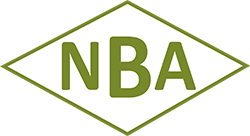Neospora
18th September 2007
Category: Health Fact Sheets
There is little doubt that Neospora is a significant cause of abortion in cattle.
Source of infection
The basic lifecycle of Neospora caninum, a protozoan parasite, is now well established.
Cattle are the intermediate host for the parasite. Dogs are the only proven primary host and are able to infect cattle by causing contamination of feed and water with oocyst-infected faeces. Dogs, and possibly foxes, are infectedby eating contaminated placental tissue or dead calves. Transmission via infected colostrum is also possible.
Herd infection
Infection is often introduced into herds by the purchase of infected replacement female breeding cattle, which infect subsequent generations but not cows already in the herd. A second possible source of infection is dog (and possibly fox) faeces, which may result in an abortion storm amongst previously uninfected cows. Following an abortion storm(up to 20% of cows may be affected) infection may become established in the herd and maintain an endemic pattern.
Infected cows remain infected for life but may not always be antibody positive. Vertical transmission to the foetus occurs in approximately 95% of offspring of infected cows. Females infected before birth do not always abort, although antibody positive dams have a higher risk of aborting. Heifers, which have been infected before birth, may have a seven fold higher risk of abortion compared to antibody negative cows.
The risk of abortion appears greatest in the first pregnancy after infection and appears to fall in subsequent pregnancies. Foetal protection is dependant on effective maternal immunity, but the maturation of maternal immunity only occurs after the first pregnancy. The placenta is central to the pathogenesis of infection and commonly infection transferred via the placenta occurs between 90 and 180 days of gestation.
Practical control measures
Any attempt to eliminate Neospora from a herd would require removal of infected animals but the cost of this approach would need to be weighed against the potential benefit of a reduced incidence of abortions. The prevalence of infection in a herd may be an important consideration in deciding whether to cull on the basis of Neospora infection alone. Another means of reducing infection might be to use only antibody negative animals as relacements.
In an infected herd, practical control measures can include:
1. Good hygiene in the calving area and disposal of foetal membranes and aborted foetuses. A wheelie bin provides a safe, dog proof, means of storage prior to disposal/incineration.
2. Preventing dog access to calving areas.
3. Avoiding dog faeces contaminating feeds and feed passageways.
4. Selective breeding for replacements from antibody negative cows. (There is no transmission via semen or ova, and studies have shown that embryo transfer can be used to produce uninfected calves from infected cows as long as the recipient cow is known to be free from infection).
5. Testing cows at the expected time of parasitaemia (around 5 months of gestation). Positive cows can then be isolated at calving and placental matter can be disposed of.
This information has been supplied by the National Beef Association assisted by Keith Cutler, Endell Veterinary Group, 49 Endless St., Salisbury, SP1 3UH. Tel: 01722 333291

